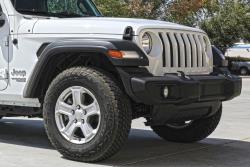
K&N air intake systems come with a 10-Year/Million Mile Limited Warranty | Engineered for 2018 Jeep Wrangler JL 3.6L V6 models, the 63-1576 K&N® performance air intake system offers a guaranteed increase in horsepower and torque for Jeep Wranglers—and features a washable, reusable High-Flow Air Filter™ to help protect against damaging engine contaminants. In addition, the enclosed air box is designed to provide additional protection during challenging off-road adventures—and can help protect your filter during water crossings. The 2018 Jeep Wrangler JL has been fully redesigned—and it shows. With nearly unbeatable off-road capability for its class and advanced tech features, the new Wrangler is engineered to help you tackle your adventures off the beaten path with ease. K&N PERFORMANCE AIR INTAKE SYSTEMS BOOST HORSEPOWERIf you want to give your Wrangler a little extra “oomph”, check out the 63-1576 performance air intake system—specifically designed to fit in the engine bay of 2018 Wrangler JLs. The 63-1576 is designed to keep engine air cooler (which can increase engine combustion efficiency), and provides a smooth, low-restriction path for airflow to the engine. Many stock intake systems have airflow-obstructing components that can create turbulence—and thus heat—resulting in less efficient combustion, and giving you less horsepower. By replacing the complete factory system with an aerodynamic tube and High-Flow Air Filter™, your engine will have access to a higher volume of cool air—giving you a guaranteed increase in horsepower and torque. AERODYNAMIC INTAKE TUBE INCREASES AIRFLOWTypical factory air intake systems force air through a restrictive disposable paper air filter before the air travels through a complex system of tubing—which often has tight bends, baffles, and other elements that can cause swirling, turbulent air. Excess turbulence can cause the molecules within the air to collide, which creates heat—and an increase in temperature reduces the density of oxygen molecules in the air. Since engine combustion is most efficient in an oxygen-rich environment, keeping engine air cooler often significantly increases engine combustion efficiency. 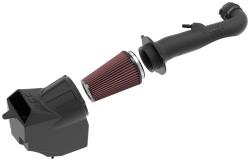
The 63-1576 for the 2018 Jeep Wrangler JL features a High-Flow Air Filter™ | The 63-1576 intake system features a free-flowing, high-density polyethylene intake tube, which is engineered to reduce turbulence in the air, keeping engine air cooler—and increasing engine performance! An incorporated radius adapter allows the filter to mount directly to the intake tube, which reduces hardware and helps increase ease of installation.HIGH-FLOW AIR FILTER™ OFFERS EXCEPTIONAL PROTECTIONMost factory disposable paper filters only “surface load” contaminants—collecting them on the surface of the media, which over time can reduce the filter’s efficiency due to clogging. Alternatively, High-Flow Air Filters™ “depth load” contaminants; multiple layers of cotton fibers capture particles on many levels. Because the contaminants are incorporated into the filter fibers, the filter can still operate without significantly reducing its efficiency. Additionally, the layered, pleated design of the filter media increases the surface area of the filter—providing significantly more contaminant capture per square inch of media over a standard paper filter. The High-Flow Air Filter™ included in the 63-1576 intake kit is oversized (625 square inches of media) with a conical shape, providing a greater surface area and allowing for a service interval of up to 100,000 miles between cleanings (under normal highway driving conditions). High-Flow Air Filters™ feature an oiled, layered design—providing up to 50% more airflow over a disposable filter. When your filter does need to be cleaned, you can use the K&N Recharger® Kit (99-5000 or 99-5050) to quickly and easily restore your filter’s performance. Each K&N intake (and filter!) is designed to last for the life of your vehicle. AIR BOX HELPS PROTECT INTAKE AIR AND FILTERThe 63-1576 features a high-density rotationally-molded polyethylene air box, which helps protect the air filter and intake air from high engine temperatures and directs airflow into the throttle body. The enclosed air box design helps create a barrier against dust, dirt, and moisture—all of which can be present in rigorous off-road environments—and is designed to provide additional filter protection during water crossings. INSTALLATION 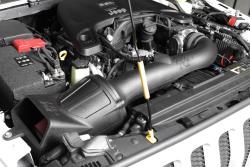
The 63-1576 air intake system after installation | The K&N 63-1576 intake system is engineered to incorporate factory mounting points and the factory mass air sensor. Installation can typically be completed in 90 minutes or less, and requires only simple hand tools. Detailed instructions are included in your kit, and installation videos for many vehicles are available on the K&N website.Engineered to fit: 2018 Jeep Wrangler JL 3.6L V6 Fuel Injection All Models WARRANTYEach intake system comes with a 10-Year/Million Mile Limited Warranty. Furthermore, using a K&N replacement air intake system will not void your factory warranty; in the U.S., manufacturers must provide evidence that an aftermarket part is the cause of a necessary repair in order to void or deny warranty coverage. The Consumer Products Warranty Act of 1975 (also known as the Magnuson-Moss Warranty Act) protects consumers’ rights to their warranty coverage. 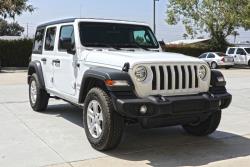
The 2018 Jeep Wrangler JL is engineered for excellent off-road performance | DYNAMOMETER RESULTSK&N performance air intake systems come with a horsepower guarantee—you will get an increase in horsepower and torque! During dynamometer testing, a 2018 Jeep Wrangler JL 3.6L V6 with a factory air intake system was recorded at 178.3-horsepower at 4630 RPM. After installation of 63-1576, the same vehicle was recorded at 190.8-horsepower at 4630 RPM—an estimated increase of 12.5-horsepower. The torque also jumped from 201.4 lb.-ft. to 213.7 lb.-ft.—an estimated increase of 12.2 lb.-ft at 4245 RPM, along with an estimated 56% more airflow compared to the stock intake system. Horsepower gains vary among products and applications, but each K&N performance air intake system is designed to increase airflow efficiency for specific vehicles and their engines. Each kit undergoes significant testing to help ensure that the filter and intake tube are engineered to deliver large increases in airflow and horsepower. Please visit individual product pages to view horsepower estimates for your specific vehicle. Visit this page to purchase the 63-1576 air intake system, or visit the application search page to explore air intake system options for your vehicle. Join the millions of customers who trust K&N to help them boost performance and protection in their vehicles!*Some intake systems are not legal for sale or use on any pollution controlled motor vehicle in California or states adopting California emission procedures. See knfilters.com for CARB status on each part for a specific vehicle.
| Engineered for 2017-2018 Chevrolet Silverado models, K&N® performance air intake systems offer a guaranteed increase in horsepower and torque for Chevy Silverados—featuring a washable performance air to help protect against engine contaminants, and an aerodynamic tube design that increases airflow and provides a boost in power. The 2018 Chevy Silverado 1500, 2500, and 3500 models are consistent with the classic American brand’s reputation for quality engineering. Good towing capacity, masculine design, and powerful engine options help distinguish the Silverado from the crowd. 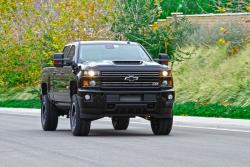
K&N air intake systems come with a 10-Year/Million Mile Limited Warranty | K&N PERFORMANCE AIR INTAKE SYSTEMS BOOST HORSEPOWERIf you’re looking to boost the horsepower in your Silverado, consider a K&N performance air intake system—designed to keep airflow to your engine cool, efficient, and smooth. Many factory intake systems have baffles and other components that can obstruct airflow, create turbulence, and subsequently create heat, resulting in less efficient engine combustion. By replacing the full stock system with a more aerodynamic tube and High-Flow Air Filter™, the engine receives a greater volume of airflow—giving you a guaranteed increase in performance. AERODYNAMIC INTAKE TUBE INCREASES AIRFLOWIn a typical factory air intake system, air must first pass through a restrictive disposable paper filter before traveling through a complex system of tubing—often featuring tight bends, baffles, and other airflow obstructions—that can cause air to swirl and become turbulent. Excess turbulence causes the molecules within the air to collide, which subsequently increases the temperature and lowers the density of the air, reducing the efficiency of engine combustion. 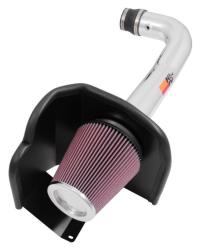
The 77-3085KP for 2018 Chevy Silverado 1500s features a High-Flow Air Filter™ and steel heat shield | K&N intake tubes are engineered to give the airstream a smooth, unobstructed path—keeping engine air cooler, and increasing the amount of oxygen available for combustion.HIGH-FLOW AIR FILTER™ OFFERS EXCEPTIONAL PROTECTIONTypical stock disposable filters are only able to “surface load”—dust collects on the surface of the media, which over time reduces the filter’s ability to allow a high volume of airflow to pass through. High-Flow Air Filters™ feature a “depth loading” design, in which multiple layers of cotton fibers allow for particle capture on multiple levels, without significantly reducing the efficiency of the filter itself. In addition, a pleated design helps increase surface area—allowing for significantly greater contaminant capture per square inch of media over a typical paper filter. The oversized, conical shape of the filter included with K&N intake systems allows for a service interval of up to 100,000 miles between cleanings (under normal highway driving conditions). When the filter does need to be serviced, you can use the K&N Recharger® Kit (99-5000 or 99-5050) to quickly and easily restore your filter’s performance. Each intake and filter is designed to last for the life of your vehicle. High-Flow Air Filters™ feature an oiled, layered design, and are available on all K&N intake systems aside from the Blackhawk Induction™ systems, which have a filter composed of synthetic, non-oiled media. HEAT SHIELD HELPS PROTECT INTAKE AIR FROM HIGH TEMPERATURESK&N intake systems also feature a custom powder-coated steel heat shield, which helps protect the air filter and intake air from high engine temperatures. The heat shield installs onto the lower factory air box and retains the fresh air inlet. INSTALLATION 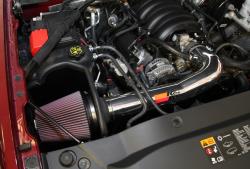
The 77-3085KP air intake system after installation | K&N cold air intake systems are designed to incorporate factory mounting points and the factory mass air sensor. Installation can typically be completed in 90 minutes or less, and requires only simple hand tools. Detailed instructions are included in your kit, and installation videos for many vehicles are available on the K&N website.WARRANTYEach intake system comes with a 10-Year/Million Mile Limited Warranty. Furthermore, using a K&N replacement air intake system will not void your factory warranty; in the U.S., manufacturers must provide evidence that an aftermarket part is the cause of a necessary repair in order to void or deny warranty coverage. The Consumer Products Warranty Act of 1975 (also known as the Magnuson-Moss Warranty Act) protects consumers’ rights to their warranty coverage. INTAKE SYSTEM OPTIONSFor many vehicle applications, multiple options of K&N intake systems will be available. 69-Series and 77-Series intakes feature mandrel-bent aluminum intake tubes, while 57-Series and 63-Series intakes have high-density polyethylene intake tubes. 71-Series intakes are from the Blackhawk Induction™ line, which feature a black powder-coated aluminum intake tube and a black oil-free synthetic filter. Please view the specific product pages for details on each intake type. DYNAMOMETER RESULTSAfter installing your new K&N air intake system, you can look forward to a guaranteed increase in horsepower and torque. On a chassis dynamometer, a 2014 Chevrolet Silverado 1500 4.3L with the stock air intake was recorded at 243.50-hp at 5,285 RPM, and after installation of the 77-3085KP the same vehicle was recorded at 253.52-hp at 5,285 RPM—an estimated increase of 10.02-hp. The torque was also improved from 239.66 lb.-ft on the stock air intake to 253.20 lb.-ft with the 77-3085KP—a total estimated increase in torque of 13.54 lb.-ft at 3,548 RPM. You can buy with confidence under the 10-Year/Million Mile Limited Warranty, and the assurance that you’re receiving a top-quality, extensively tested product. EXPLORE INTAKES FOR YOUR VEHICLE*:2017 Chevrolet Silverado 1500 4.3L V6: 77-3085KP, 63-3085 2018 Chevrolet Silverado 1500 4.3L V6: 77-3085KP, 63-3085 2017 Chevrolet Silverado 1500 5.3L V8: 77-3082KP, 63-3082, 71-3082 2018 Chevrolet Silverado 1500 5.3L V8: 77-3082KP, 63-3082, 71-3082 2017 Chevrolet Silverado 1500 6.2L V8: 77-3082KP, 63-3082, 71-3082 2018 Chevrolet Silverado 1500 6.2L V8: 77-3082KP, 63-3082, 71-3082 2017 Chevrolet Silverado 2500 HD 6.6L V8: 77-3101KP 2018 Chevrolet Silverado 2500 HD 6.6L V8: 77-3101KP 2018 Chevrolet Silverado 3500 HD 6.6L V8: 77-3101KP 2017 Chevrolet Silverado 2500 HD 6.0L V8: 77-3090KTK 2017 Chevrolet Silverado 3500 HD 6.0L V8: 77-3090KTK 2017 Chevrolet Silverado 3500 HD 6.6L V8: 77-3090KTK *Use K&N’s vehicle application search to view the most up-to-date part numbers by following this link: knfilters.com. Horsepower gains vary among products and applications, but each K&N performance air intake system is designed to increase airflow efficiency for specific vehicles and their engines. Each kit undergoes significant testing to help ensure that the filter and intake tube are positioned to deliver large increases in airflow and horsepower. Please visit individual product pages to view horsepower estimates for your specific vehicle.Visit knfilters.com to explore air intake system options for your specific vehicle, and join the millions of customers who trust K&N to help them boost performance and protection in their vehicles. FAQsWill using a K&N® replacement air intake system void my factory warranty?No. In the United States, in order for the manufacturer of a warranted product to void or deny warranty coverage of a repair due to the use of an aftermarket part, the manufacturer must provide proof that the aftermarket part is the cause of the necessary repair. These rights are protected under the Consumer Products Warranty Act of 1975 (also referred to as the Magnuson-Moss Warranty Act). Are K&N® performance air intake systems or RK-series custom air cleaner assemblies emissions legal in the U.S.?Performance intake systems are legal for street use in most areas of the United States. In California, and in specific regions which have adopted California air quality regulations, only CARB-exempt performance intakes are legal for street use. Check the K&N catalog or website for vehicle applications and specific CARB status for each vehicle and air intake. Can a K&N® product cause my Check Engine Light or Service Light to come on?It is possible that the Check Engine Light may come on after installing a K&N air filter or performance intake system. This does not necessarily mean that there is something wrong with your air filter or intake; sometimes, the higher air flow and lower restriction provided by the K&N product will uncover an existing mechanical or electronic issue with your vehicle. In rare cases, you may have a K&N product which was manufactured outside of its design tolerances, causing sensors in your vehicle to read data outside of their normal expected values. In either case, the K&N Warranty Department can work with you to narrow down the cause of the Check Engine Light and correct the issue. How much horsepower does a K&N® cold air intake add?Dynamometer tests indicating horsepower and torque increases over the OEM intake system will appear on the "Product Details" page for each of our performance intake systems. What does a cold air intake do for a car?Cold air intakes allow for increased airflow to your engine, which results in an increase in torque and acceleration for your vehicle. Can cold air intakes improve gas mileage?In theory, a cold air intake could increase the gas mileage of your vehicle due to improved airflow which allows the engine to run more efficiently and require less fuel. However, K&N does not make any guarantees in terms of increased gas mileage with the use of our filters or intakes. | 2017 GMC SIERRA 3500 HD 6.0L V8 Fuel Injection - All Models
2017 GMC SIERRA 2500 HD 6.0L V8 Fuel Injection - All Models
2017 CHEVROLET SILVERADO 3500 HD 6.0L V8 Fuel Injection - All Models
2017 CHEVROLET SILVERADO 2500 HD 6.0L V8 Fuel Injection - All Models
2016 GMC SIERRA 3500 HD 6.0L V8 Fuel Injection - All Models
2016 GMC SIERRA 2500 HD 6.0L V8 Fuel Injection - All Models
2016 CHEVROLET SILVERADO 3500 HD 6.0L V8 Fuel Injection - All Models
2016 CHEVROLET SILVERADO 2500 HD 6.0L V8 Fuel Injection - All Models
| *Some intake systems are not legal for sale or use on any pollution controlled motor vehicle in California or states adopting California emission procedures. See knfilters.com for CARB status on each part for a specific vehicle.
| You might be wondering—what’s the best way to add horsepower to my vehicle? Aftermarket modifications like bolt-on superchargers and turbochargers can add significant horsepower, but are often very expensive—typically in the thousands of dollars—and can take considerable amounts of time and mechanical prowess to install. 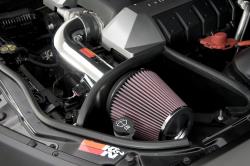
K&N performance air intake systems add horsepower and torque to your car | That’s where K&N performance air intake systems come in—giving you a guaranteed increase in horsepower without the hefty price tag of a supercharger, and typically in less than 90 minutes for installation.How does an engine make power?An internal combustion engine operates by burning a mixture of fuel and oxygen within the engine’s cylinders. The fuel injectors provide a precise amount of fuel, which combines with air delivered by the air intake system. A spark plug then ignites the volatile gas, creating an explosion that forces the piston downward—turning the crankshaft. The piston-moving force that’s created during the combustion cycle is what produces horsepower. How do factory air intake systems work?Your engine needs oxygen to create power. The cylinders in your vehicle’s engine have to have air to create the explosion that produces horsepower and torque. Since cold air contains more oxygen molecules than warm air, injecting a higher volume of oxygen-rich air into the cylinders allows the engine to burn fuel more efficiently during combustion—providing an increase in power. In a typical stock air intake system, air has to pass through a thick, disposable paper filter, and then move through a narrow system of tubing that can cause air to swirl and become turbulent. Excess turbulence causes the molecules within the air to collide, creating heat, which lowers the density of the air and reduces the efficiency of combustion. Factory systems often feature intake tubing with tight bends, baffles, and other obstacles that can slow airflow and create turbulence. These systems are also typically designed to muffle engine noise—unlike K&N intake systems, which are designed to give your engine a more satisfying growl. 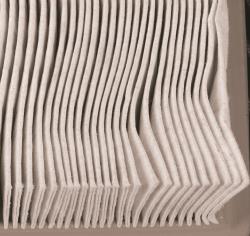
Disposable paper filters often feature thick media that restricts airflow | Why is airflow so important for my engine’s performance?Maintaining the proper air-to-fuel ratio (AFR) is critical for engine performance, and relates to the amount of air versus the amount of fuel used by an engine for combustion. A correct, stoichiometrically balanced AFR produces combustion with perfect efficiency, excluding other factors. For gasoline engines, the theoretically perfect chemical ratio is 14.7:1—14.7 parts air to one part fuel. In effect, this means that an engine requires almost fifteen times more air than fuel for efficient combustion—which emphasizes the importance of providing a high volume of air through an intake system. Why not use a disposable paper air filter with my intake system?Most dry, disposable paper air filters function on a size-dependent basis—dirt particles that are larger than the openings in the filter media are trapped, while particles that are smaller than the openings pass through. Most disposable paper filters create a large amount of airflow restriction, as the openings in the filter media have to be extremely small to filter efficiently—which slows down airflow. Because dust accumulates on the surface of the disposable filter, performance typically decreases consistently throughout the filter’s service interval. Why is a High-Flow Air Filter™ better than a disposable filter? 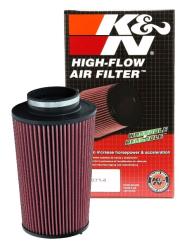
High-Flow Air Filters feature a specially designed cotton media | A paper filter exhibits a principle called surface loading; dust collects only on the surface of the media. In contrast, K&N High-Flow Air Filters™ utilize depth loading, where multiple layers of cotton fibers provide particle retention on many levels, and the media also features pleats to increase the contaminant-capturing surface area. As a result, K&N filters are able to hold significantly more dirt and particulate matter per square inch of media over an average paper filter.In addition, High-Flow Air Filters™ utilize the principle of diffusion to increase the capture of engine contaminants. Small particles are highly affected by forces within the air stream, such as velocity changes, pressure changes, or turbulence. As a result, the behavior of extremely small particles is typically random and chaotic. These particles do not follow the air stream, and their erratic motion causes them to collide with the filter’s fibers—where they are trapped and held by oil. This enables a K&N air filter to capture contaminant particles that are much smaller than the openings within the filtration media. Is a K&N performance air intake system better than a stock system?K&N performance air intake systems are designed to create a more aerodynamic path for airflow to reach the engine by removing the stock intake tubing that can create excess turbulence, and also by utilizing highly airflow-efficient filter media. 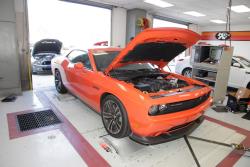
All K&N performance air intake systems are tested on a dynamometer | In a K&N cold air intake system, air first passes through a performance air filter—typically a High-Flow Air Filter™, which is designed to provide up to 50% more airflow than a disposable paper filter—and then passes through an aerodynamically-engineered tubing system that helps prevent unnecessary turbulence/heat.Cold air is more dense than warm air because it contains additional oxygen molecules—allowing the cylinders to facilitate combustion more efficiently. A factory air intake typically feeds warm air to the cylinders, while K&N performance air intake systems are designed to provide a smooth, unimpeded path for the airstream—keeping the airstream cooler and more oxygen-dense. With a K&N performance air intake system, you get a guaranteed increase in horsepower and torque. Which K&N intake system should I choose?All K&N performance air intake systems are designed to increase airflow through an aerodynamic path that reduces turbulence, and filter designs that provide an increase in the volume of air that reaches your engine. K&N offers several options to cater to different aesthetic, ease of maintenance, and filter media preferences. 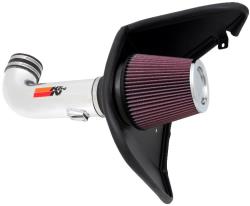
Mandrel-bent aluminum intake systems feature an aerodynamically designed tube | Mandrel-Bent Aluminum Intake Systems: 69-Series, 77-SeriesMandrel-bent aluminum intake tubes help provide an increase in airflow to your engine and reduce turbulence—keeping air cooler and providing more power. These systems are paired with a washable, reusable High-Flow Air Filter™ featuring oiled cotton filter media, and the oversized, conical design allows you to go up to 100,000 miles between filter services under normal highway driving conditions. A steel heat shield helps protect intake air from the high temperature of your engine bay, helping to increase combustion efficiency. • Oversized conical air filter extends use between cleanings—up to 100,000 miles under normal highway driving conditions • Washable, reusable, and durable • Innovative design of layered, oiled cotton media provides up to 50% more airflow, while maintaining excellent engine protection • Aerodynamically engineered tube further increases airflow • Guaranteed to increase horsepower and torque • Improves engine sound • Removes unnecessary engine bay components • Typical installation can be completed in 90 minutes or less with basic hand tools • Extensively tested for filtration and dust capacity in an in-house ISO 5011 testing laboratory • 10-Year/Million Mile Limited Warranty 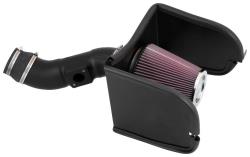
HDPE roto-molded intake systems feature a steel heat shield | Roto-Molded High-Density Polyethylene (HDPE) Intake Systems: 57-Series, 63-SeriesHigh-density polyethylene (HDPE) rotationally molded tubes help accelerate airflow to your engine and reduce turbulence—keeping air cooler and providing more power. These systems are paired with a washable, reusable High-Flow Air Filter™ featuring oiled cotton filter media, and the oversized, conical design allows you to go up to 100,000 miles between filter services under normal highway driving conditions. A steel heat shield helps protect intake air from the high temperature of your engine bay, which helps increase combustion efficiency. • Oversized conical air filter extends use between cleanings—up to 100,000 miles under normal highway driving conditions • Washable, reusable, and durable • Innovative design of layered, oiled cotton media provides up to 50% more airflow, while maintaining excellent engine protection • Aerodynamically engineered tube further increases airflow • Guaranteed to increase horsepower and torque • Improves engine sound • Removes unnecessary engine bay components • Typical installation can be completed in 90 minutes or less with basic hand tools • Extensively tested for filtration and dust capacity in an in-house ISO 5011 testing laboratory • 10-Year/Million Mile Limited Warranty Blackhawk Induction™ Air Intake Systems: 71-Series 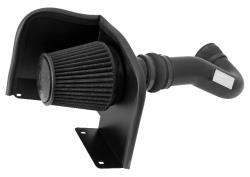
Blackhawk Induction™ air intake systems feature an all-black design | Blackhawk Induction air intake systems feature an oil-free synthetic filtration media, black powder-coated aluminum, and all-black components. The layered Dryflow® synthetic filtration media provides increased airflow and exceptional engine protection without requiring oil, and a steel heat shield helps protect intake air from the high temperature of your engine bay. Service your filter every 100,000 miles under normal highway driving conditions. • Synthetic filtration media requires no oil • Stylish, minimalistic aesthetics • Oversized conical air filter extends use between cleanings—up to 100,000 miles under normal highway driving conditions • Washable, reusable, and durable • Innovative design of lofted synthetic media facilitates increased airflow and excellent engine protection • Aerodynamically engineered tube further increases airflow • Guaranteed to increase horsepower and torque • Improves engine sound • Removes unnecessary engine bay components • Typical installation can be completed in 90 minutes or less with basic hand tools • Extensively tested for filtration and dust capacity in an in-house ISO 5011 testing laboratory • 10-Year/Million Mile Limited Warranty What horsepower increase can I expect from a K&N air intake system? 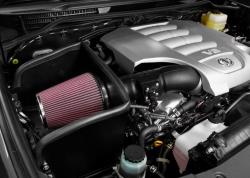
An HDPE intake system after installation | Horsepower gains vary among products and applications, but each K&N performance air intake system is designed to increase airflow efficiency for specific vehicles and their engines. Each kit undergoes significant testing to help ensure that the filter and intake tube are positioned to deliver large increases in airflow and horsepower. Please visit knfilters.com to view horsepower estimates for specific vehicle applications.Join the millions of customers who trust K&N to provide performance and protection products for their vehicles. Visit knfilters.com to explore air intake system options for your specific vehicle. |
| Whether you’re planning a short weekend trip to your local national park—or an extended cross-country road trip—you can help avoid unexpected roadside headaches by performing thorough pre-trip maintenance on your RV. Taking good care of your home-away-from-home will help you enjoy your vacations for many years to come! 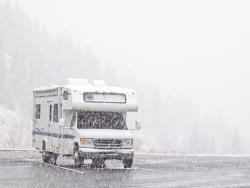
Ensuring your brakes are in good condition is critically important | CHECK YOUR BRAKESCheck for any brake fluid leaks, and make sure the reservoir is filled to the recommended level. If you’re towing a heavy load, your brakes have to work even harder, particularly on steep inclines. When looking between your wheel’s spokes, you should be able to see at least one-fourth of an inch of pad—any thinner than that, and you should have them inspected and possibly replaced. EXAMINE YOUR TIRESYour tire treads should be in good condition before any trip—generally speaking, less than 6/32” of tread depth indicates that your tires should be replaced, as well as any cracks that are deeper than 1/16”. To extend the life of your tires, check to make sure your tire pressure is always at the manufacturer-recommended level, and rotate your tires regularly according to their recommended service schedule. Long periods of storage and long-term exposure to sunlight can accelerate tire damage. 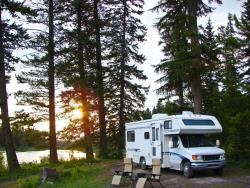
Planning ahead helps you have peace of mind on your travels | Keep an eye out for weather cracking, which will appear in the flex area of the sidewall. Now is also a good time to tighten your lug nuts, and make sure you have what you need to change a tire in case of a flat.INSPECT YOUR COOLING SYSTEMOverheating on the open road in the middle of summer isn’t just a temporary headache—it can cause permanent engine damage. While your engine is cool, take a close look in your engine bay. Cracks or leaks in hoses and belts indicate a need for immediate repair, and make sure all connections are snugly fitted. Fill your coolant reservoir to the recommended level (a 50/50 mixture of coolant and distilled water is standard). If it’s been more than two years since your last full coolant flush, you should consider completely replacing the fluids. CONSIDER A BACKUP CAMERAA backup camera helps take the guess-work out of navigating tight spaces and hitching up trailers—and also increases safety. Even the most seasoned drivers can benefit from an extra pair of eyes in their blind spots. 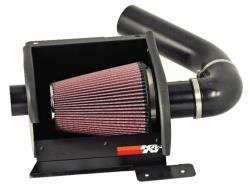
K&N performance air intake systems provide a guaranteed increase in horsepower | INSTALL AN AIR INTAKE SYSTEMIf you’re nervous about getting up steep inclines—or need a little extra pep for towing—installing a K&N performance air intake system will provide you with a guaranteed increase in horsepower and torque. The 77-2570KTK intake system—designed for 2015-2016 Ford E450 6.8L V10 motorhomes—provides an estimated increase of 17.46-horsepower at 4,101 RPMs*. Find yours at knfilters.com! 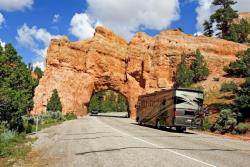
Some extra horsepower can come in handy when climbing steep inclines | TESTIMONIAL:“I installed this intake on my 2011 E350 Super Duty van one week before a 10,000-mile road trip around the US. Can’t say enough good things about this system. Great power right out of the box. Sounds amazing and helped with fuel mileage. Was a must have for the mountains out West.” – Brandon from Florida REFRESH YOUR TOOL KITMake sure your tool kit is properly stocked, and that all of your tools are in working order. It’s a good idea to carry:• Cordless drill and spare battery • Small drill bit set • Screws and an assortment of small hardware • Small bolts/washers of various sizes and lengths • Flashlight and/or headlamp • Folding shovel • Caulking gun/caulk • Road flares • Distilled water • Jumper cables • Socket wrench set • Phillips head and flat-blade screwdrivers • Pliers (standard and channel-lock) • Hammer • Pocket knife • Wire cutters • Tape measure • Hacksaw • Super glue • Insulated wire • Electrical tape • Fuses of various amperages • Replacement bulbs • Duct tape TEST ALL EXTERIOR AND INTERIOR LIGHTSMake sure all of your lights are in proper working order before heading out on any trip, and keep a package of replacement bulbs as part of your kit. 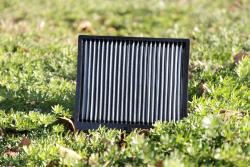
K&N washable cabin air filters help protect your interior from contaminants | CHANGE YOUR ENGINE/CABIN AIR FILTERSA clogged filter decreases airflow to your engine and can reduce performance when you need it most. Check out K&N’s High-Flow™ Air Filters—they’re washable, reusable, and designed to last for the entire lifespan of your RV. If you have a cabin air filter, check out K&N’s washable line, which helps protect your cabin and passengers from airborne dust and contaminants. To search for filters for your specific vehicle, check out knfilters.com. CHECK YOUR FULL ELECTRICAL SYSTEMExamine the electrical cord that connects your RV to a park power source, and check for any signs of damage. Also, take a look at your circuit breakers and fuse boxes, and make sure they’re labeled. If you’re towing, make sure the electrical connection is set up properly. ANALYZE YOUR BATTERIESBatteries can lose a considerable amount of charge while in storage, so make sure your batteries are fully charged before any trip—and watch out for any corrosion. Always refer to the manual when adjusting water levels, and be sure to wear eye protection. FLUSH YOUR WATER SYSTEM + CHECK FOR LEAKSIt’s a good idea to sanitize your water system every time you take your RV out of storage. Can you imagine what grows in a moist water system that’s left to sit in storage for months? You probably don’t want to. Bacteria, mildew, and mold can proliferate in a water system that’s left to sit—and you want the water you bathe in, cook with, and drink to be clean. Steps to sanitize your water system:• Drain the water heater (never drain while hot or under pressure) • Locate and drain the water from the low point water line drains—one for hot and one for cold water lines • Drain the fresh water holding tank • Close all of the drains • Use ¼ cup of bleach for every 15 gallons of water your tank holds—mix the bleach with water in a 1-gallon container and pour into the water holding tank (do not pour straight bleach into your tank!) • Fill the fresh water holding tank almost full of potable water • Turn the water pump on, and open all faucets • Run all of the faucets until you smell bleach at each faucet • Close the faucets • Let sit for around 4 hours • Drain the entire system again—re-fill fresh water tank with potable water • Run all faucets until you no longer smell bleach (you may have to drain the system multiple times to remove all bleach from the system) • Once you no longer smell bleach at each faucet, your water system is now clean! You can check for leaks by grabbing a flashlight or headlamp and turning on your water pump. Wait until the sound of the pump stops and the water is pressurized. Turn off the pump, and begin looking for leaks—around the toilet and under the sink are good places to start. TEST APPLIANCESCheck each interior appliance to make sure it is in good working order. Test your water pump, furnace, air conditioner, and all lights and outlets. If you use propane (LP gas), check your tanks (these can expire), all connections, the valve, and the firing operation. If something seems off, have a professional examine the system. SERVICE YOUR GENERATORWhen pulling your RV out of storage for the season, follow the directions for servicing in your generator’s manual. Before starting it up, make sure the oil is at the appropriate level, and check for any problems around the exhaust. Run the generator for at least two to three hours every month to keep it primed and ready, as fuel that sits too long can cause damage. 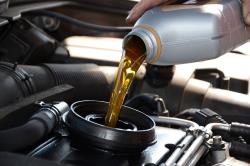
Follow your manufacturer’s recommended service schedule for oil changes | CHECK ALL FLUIDSCheck the levels of your transmission fluid, power steering fluid, engine coolant, engine oil, windshield washer fluid, brake fluid, and generator oil. If any fluids are suspiciously low, make sure to check for leaks. Regular oil changes help prevent unnecessary wear-and-tear on your engine. INSPECT SEAMSAt some point in your RV’s lifespan, it will probably experience a leak or two in its roof seals and/or seams. It’s important to know the type of material that your RV’s roof features, and bring along compatible repair sealants on every trip just in case. Sealants will vary based on the RV’s material—silicone, for example, won’t bond with a rubber roof. Regular household caulking may or may not hold up long-term, but can work to plug a leak in a pinch. Water damage can be seriously expensive, so plan ahead for on-the-go repairs. With a bit of forethought and careful maintenance, you can help avoid mid-trip repair fiascos, increase your RV’s performance, and enjoy well-planned vacations for years to come! Search for performance products for your RV at knfilters.com.*Estimated horsepower and torque gains based on specific or similar vehicle dynamometer tests. Results will vary. For more information, look up vehicle and/or testing protocols at knfilters.com. This post is for informational purposes only, and we do not warrant that the information provided will produce any specific results or achieve any intended purposes. Every vehicle is different and subject to different road conditions and wear and tear. You should always follow your manufacturer’s recommended service schedule, consult the vehicle owner’s manual, and/or have your vehicle evaluated by a properly trained mechanic. 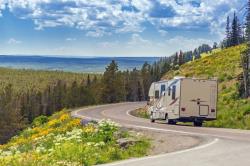
Make sure you perform a thorough pre-trip check before every excursion | |
| |